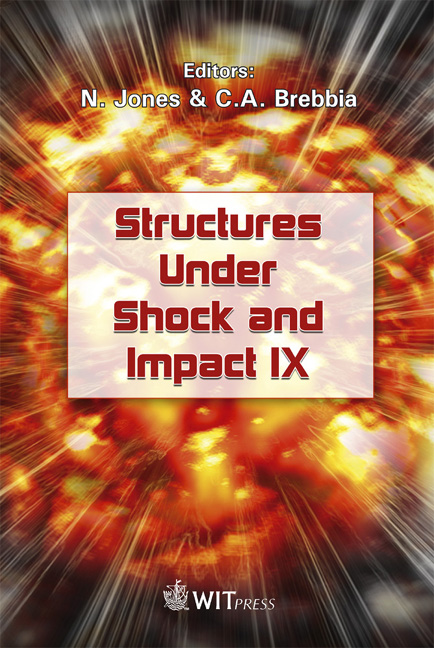The Effect Of Braid Angle On The Dynamic Response Of 3-D Four Direction Carbon/epoxy Braid Composites At High Strain Rates
Price
Free (open access)
Transaction
Volume
87
Pages
10
Published
2006
Size
652 kb
Paper DOI
10.2495/SU060141
Copyright
WIT Press
Author(s)
Z. H. Tan, B. Jia, B. J. Pang & B. Z. Gai
Abstract
In this paper, the compressive properties of two different braid angles of 150 and 300 of 3-D four-direction braid carbon/epoxy composites have been investigated to evaluate the compressive failure mode at different strain rates by using the split Hopkinson pressure bar (SHPB). Samples with different braid angles were subjected to a high strain rate compression loading at strain rates, ranging from almost 500/s to 2000/s. A copper disk was selected to use as a pulse shaper to ensure that the stress and strain in the specimen were uniform and deformed at a nearly constant strain rate over most of the dynamic compression duration. The effects of the strain rates and braid angles on peak stress and stiffness were discussed in the study. The results indicated that composites with a braid angle 150 had larger peak stress and stiffness at high strain rates. Keywords: SHPB, braid composite material, high strain rate, braid angle, dynamic peak stress. 1 Introduction A large number of the applications of composite materials involve dynamic loading during their service life. Deformation and fracture of the composites have received considerable attention. Further, development of a constitutive equation for materials used in structures subjected to dynamic loading requires the knowledge base of the variation in material strength with the applied rate of loading and also how stress and strain rate are related [1, 2]. Hence, it is necessary to characterize the composites’ dynamic response at high strain rates.
Keywords
SHPB, braid composite material, high strain rate, braid angle, dynamic peak stress.





